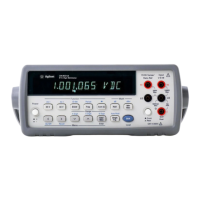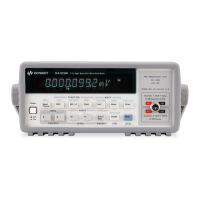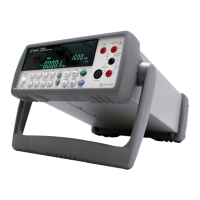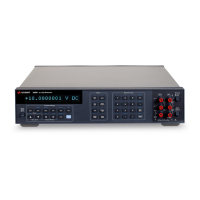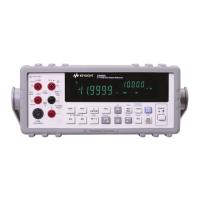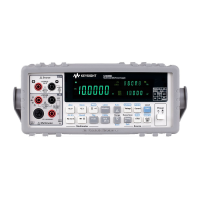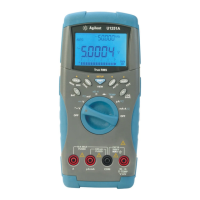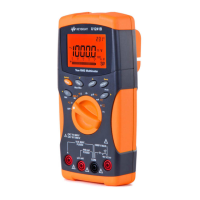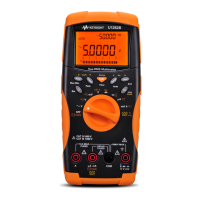104 34410A/11A User’s Guide
4 Measurement Tutorial
True RMS AC Measurements
True RMS responding multimeters, like the Agilent 34410A/34411A,
measure the "heating" potential of an applied voltage. Power dissipated in
a resistor is proportional to the square of an applied voltage, independent
of the waveshape of the signal. This multimeter accurately measures true
RMS voltage or current, as long as the wave shape contains negligible
energy above the meter’s effective bandwidth.
1
The multimeter's ac voltage and ac current functions measure the
ac–coupled true RMS value. In this Agilent meter, the “heating value” of
only the ac components of the input waveform are measured (dc is
rejected). As seen in the figure above; for sinewaves, triangle waves, and
square waves, the ac–coupled and ac+dc values are equal,
since these
waveforms do not
contain a dc offset. However, for non–symmetrical
waveforms, such as pulse trains, there is
a dc voltage content, which is
rejected by Agilent’s ac–coupled true RMS measurements. This can provide
a significant benefit.
An ac–coupled true RMS measurement is desirable when you are
measuring small ac signals in the presence of large dc offsets. For
example, this situation is common when measuring ac ripple present on
dc power supplies.
